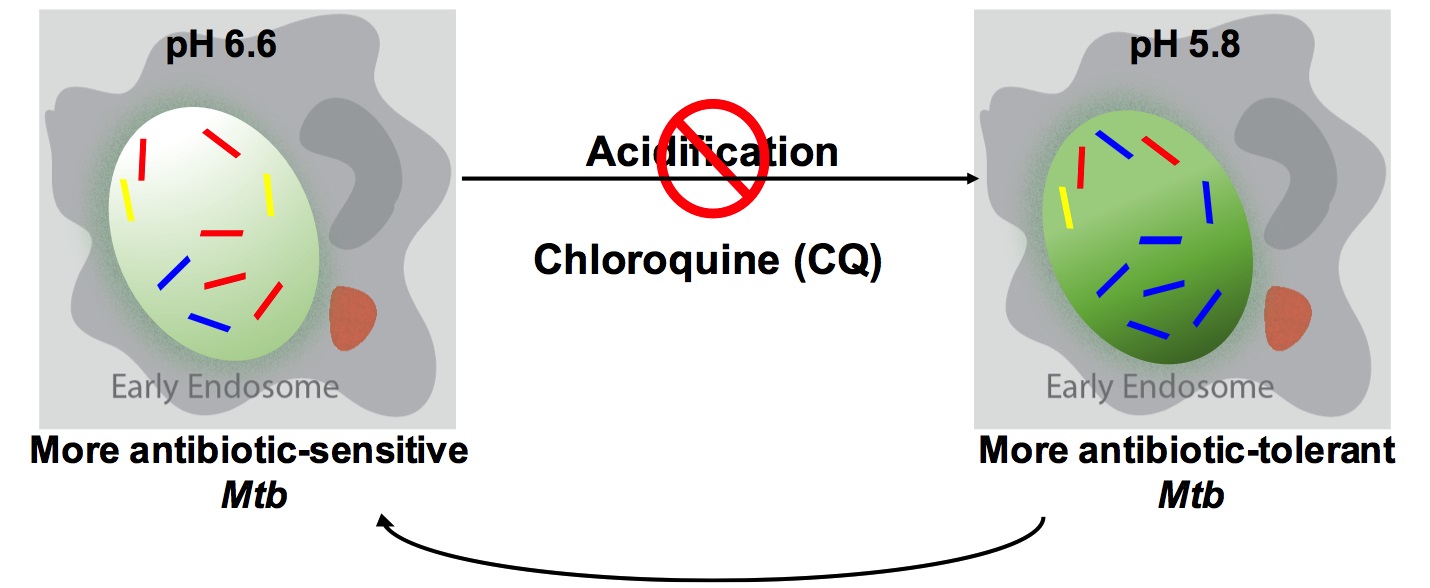Tackling tuberculosis with an anti-malarial drug
Tuberculosis (TB) claims millions of lives each year and remains a global health hazard. The occurrence of relapse after anti-TB therapy and drug-resistant infections are prime concerns in the field of TB management.
Our findings show that the internalization by immune cells, intended by the host immune system to fight off infections, can prove beneficial for the pathogen, Mycobacterium tuberculosis (Mtb). Internalization of Mtb by host macrophages induces perturbations in the redox physiology of bacteria to generate a sub-population of Mtb that withstands oxidative stress within macrophages as well as tolerates exposure to high concentrations of first-line anti-TB antibiotics, such as isoniazid (Inh). Interestingly, this drug-tolerant fraction of Mtb is harboured selectively within macrophages that acidify to a greater extent than those macrophages that are enriched with drug-sensitive Mtb. In this regard, we hypothesized that off-setting pH within macrophages could prove beneficial in preventing the appearance of drug-tolerant Mtb during infection. We demonstrate that administering chloroquine (CQ), an anti-malarial drug that neutralizes pH within macrophages, prevents the appearance of the redox-altered Mtb fraction during infection. Furthermore, combining CQ with Inh or rifampicin (Rif) dramatically reverses the tolerance of Mtb towards these antibiotics. In mice and guinea pigs that have been chronically-infected with Mtb, the co-administration of CQ with Inh or Rif not only increases the efficacy of the antibiotics in alleviating bacterial load and improving disease-related pathology but also significantly reduces chances of post-chemotherapeutic relapse.

Our work provides a causal link between the heterogeneity in host-pathogen interactions and antibiotic tolerance in Mtb, which could have implications for the re-positioning of CQ in currently existing anti-TB therapy regimens to achieve a more robust system for TB management.

From Left to Right: Sakshi Kohli, Richa Mishra, Amit Singh, Parijat Bandyopadhyay, RS Rajmani, Vasista Adiga. Photo Credit: Arshiya Dewan
References
- Reference: Mishra, R., Kohli, S., Malhotra, N., Bandyopahdyay, P., Mehta, M., Munshi, M., Adiga, V., Ahuja, V.K., Shandil, R.K., Rajmani, R.S., Seshasayee, A.S.N., & Singh, A. Targeting redox heterogeneity to counteract drug tolerance in replicating Mycobacterium tuberculosis. (2019) Science Translational Medicine, 11(518). DOI:
https://doi.org/10.1126/scitranslmed.aaw6635
- https://www.researchmatters.in/news/iisc-researchers-use-anti-malarial-drug-increase-effectiveness-anti-tuberculosis-drugs
Website URL : http://cidr.iisc.ac.in/amit/
The full version of the article is freely accessible at http://cidr.iisc.ac.in/amit/publication/





